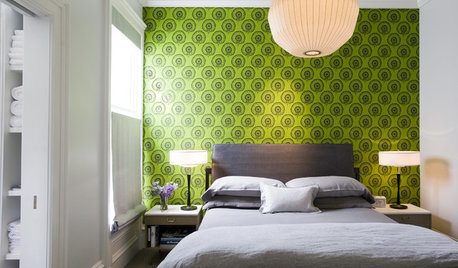Just starting with butterflies.
wellingtoncdm
9 years ago
Related Stories

GARDENING FOR BUTTERFLIESA Quick-Start Guide to Bird-Watching for Fun and Learning
Set out some seed and grab your field guide. Bird-watching is an easy, entertaining and educational activity for the whole family
Full Story
GREAT HOME PROJECTSConsidering Wallpaper? Here's How to Get Started
New project for a new year: Give your room a whole new look with the color, pattern and texture of a wall covering
Full Story
FALL GARDENINGWhat Monarch Butterflies Taught Me About Garden Design
Thinking like a butterfly leads to fresh perspectives in the garden and in life
Full Story
GARDENING GUIDESHow to Stop Worrying and Start Loving Clay Soil
Clay has many more benefits than you might imagine
Full Story
GARDENING GUIDES12 Tips to Help You Start an Edible Garden
Get on your way to growing your own vegetables with a raised bed or a few containers on the patio
Full Story
GARDENING FOR BUTTERFLIESButterfly Gardening: Delight the Eyes With Living Sculptures
Surprise and thrill with a garden that attracts magical winged creatures, bringing color, movement and life
Full Story
GARDENING GUIDES6 Steps to Creating Your Butterfly Garden
Encourage these fanciful winged beauties to visit your garden while helping restore their fragmented habitat
Full Story
CALIFORNIA NATIVE PLANTSGreat Design Plant: Asclepias Is Attractive to Monarch Butterflies
Increase monarch butterfly populations in California by planting stunning native milkweeds
Full Story
GARDENING GUIDES6 Plants That Beat Butterfly Bush for the Wildlife Draw
It's invasive, a nonnative and a poor insect magnet. Check out these better alternatives to butterfly bush in the garden
Full Story
GARDENING FOR BUTTERFLIESBe a Butterfly Savior — Garden for the Monarchs
Keep hope, beauty and kindness alive in the landscape by providing a refuge for these threatened enchanters
Full Story






docmom_gw
Tom
Related Professionals
Camas Landscape Architects & Landscape Designers · Rossville Landscape Architects & Landscape Designers · Edinburg Landscape Contractors · El Reno Landscape Contractors · Fairfield Landscape Contractors · Framingham Landscape Contractors · Kettering Landscape Contractors · Palos Verdes Estates Landscape Contractors · Albany Fence Contractors · Atascadero Fence Contractors · Burlington Fence Contractors · Charlotte Fence Contractors · Hull Fence Contractors · Reisterstown Fence Contractors · Fairland Window ContractorsMissSherry
Leafhead
wellingtoncdmOriginal Author
wellingtoncdmOriginal Author
weed30 St. Louis
wellingtoncdmOriginal Author
Leafhead